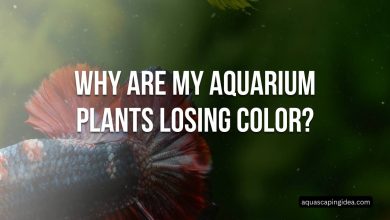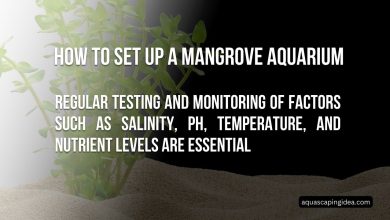How to Prepare Driftwood for Aquarium?
Driftwood is a captivating addition to any aquarium, offering both aesthetic appeal and functional benefits for your aquatic ecosystem. Its natural, weathered appearance can transform your tank into a slice of underwater wilderness, while also providing hiding spots for fish, surfaces for beneficial bacteria to colonize, and even helping to soften water and lower pH levels. However, before you can reap these rewards, it’s crucial to properly prepare your driftwood for aquarium use. This process ensures that the wood is safe for your aquatic inhabitants and doesn’t introduce harmful substances into your carefully balanced ecosystem.
In this comprehensive guide, we’ll walk you through every step of preparing driftwood for your aquarium, from selecting the right piece to finally submerging it in your tank. Whether you’re a seasoned aquarist looking to refine your technique or a beginner eager to enhance your aquascape, this article will equip you with the knowledge and skills to successfully integrate driftwood into your underwater world.
Selecting the Right Driftwood
Types of Driftwood Suitable for Aquariums
Not all driftwood is created equal when it comes to aquarium use. Some types are better suited for underwater environments than others. Here’s a breakdown of popular driftwood types for aquariums:
- Manzanita: Known for its intricate branching structure and reddish-brown color.
- Malaysian Driftwood: Dense and long-lasting, with a dark brown appearance.
- Spider Wood: Features thin, spidery branches that create interesting shapes.
- Cholla Wood: Hollow, cactus-like wood that’s great for small tanks and shrimp habitats.
- Mopani Wood: Dense hardwood with contrasting light and dark areas.
Each type has its unique characteristics, so consider your tank’s size, inhabitants, and desired aesthetic when making your selection.
Considerations When Choosing Driftwood
When selecting driftwood for your aquarium, keep these factors in mind:
- Size: Ensure the piece fits comfortably in your tank without overcrowding.
- Shape: Look for interesting forms that complement your aquascape design.
- Hardness: Harder woods last longer underwater and are less likely to decompose quickly.
- Source: Purchase from reputable aquarium suppliers or collect from safe, legal locations.
- Toxicity: Avoid woods known to be toxic to aquatic life, such as pine or cedar.
Where to Find Aquarium-Safe Driftwood
You have several options for obtaining driftwood:
- Aquarium stores: Often sell pre-prepared, aquarium-safe driftwood.
- Online retailers: Offer a wide variety of driftwood types and sizes.
- Natural collection: If permitted, collect from beaches, rivers, or lakes.
- Landscaping suppliers: Sometimes carry suitable hardwood pieces.
If collecting from nature, be aware of local regulations and avoid areas that may have been exposed to pollutants or pesticides.
Cleaning and Sterilizing Driftwood
Initial Cleaning Process
Before any treatment, give your driftwood a thorough cleaning:
- Rinse with clean water to remove loose debris.
- Scrub gently with a soft brush to remove dirt and algae.
- Avoid using soap or chemicals that could harm aquatic life.
For stubborn debris, you can use a mixture of one part white vinegar to four parts water for cleaning, followed by a thorough rinse.
Sterilization Methods
To eliminate potential pathogens or hitchhikers, sterilize your driftwood using one of these methods:
- Boiling:
- Submerge the wood in a large pot of water.
- Bring to a boil and maintain for 1-2 hours.
- Allow to cool before handling.
- Baking:
- Preheat oven to 200°F (93°C).
- Place wood on a baking sheet.
- Bake for 1-2 hours, monitoring to prevent scorching.
- Bleach soak:
- Mix 1 part bleach to 9 parts water.
- Soak wood for 15-20 minutes.
- Rinse thoroughly and soak in dechlorinated water for 24 hours.
Each method has its pros and cons:
| Method | Pros | Cons |
|---|---|---|
| Boiling | Effective, no chemicals | Limited by pot size, can be messy |
| Baking | Dries wood, kills most organisms | Risk of scorching, limited by oven size |
| Bleach | Highly effective against pathogens | Requires careful rinsing, chemical concerns |
Choose the method that best suits your situation and the size of your driftwood.
Waterlogging the Driftwood
Understanding the Waterlogging Process
Waterlogging is crucial for preventing your driftwood from floating in the aquarium. This process involves saturating the wood with water to increase its density. The time required varies depending on the wood type and size, ranging from a few days to several weeks.
Methods for Waterlogging
- Submersion method:
- Place the driftwood in a large container filled with dechlorinated water.
- Weigh it down with rocks or other heavy objects to keep it submerged.
- Change the water every few days to prevent bacterial growth.
- Test periodically by placing it in the aquarium to see if it sinks.
- Gradual introduction:
- Start by placing the driftwood partially submerged in the aquarium.
- Gradually increase the submerged portion over time.
- This method allows for a more natural integration but may take longer.
- Pressure cooker method (for smaller pieces):
- Place the driftwood in a pressure cooker with water.
- Cook at high pressure for 2 hours.
- This can significantly speed up the waterlogging process.
Dealing with Stubborn Floaters
If your driftwood persistently floats:
- Attach it to a heavy base using aquarium-safe silicone or zip ties.
- Drill small holes in inconspicuous areas to help water penetrate.
- Be patient – some woods may take several weeks to fully waterlog.
Tannin Management
Understanding Tannins
Tannins are organic compounds naturally present in wood that can leach into water, creating a tea-like color. While not harmful to fish, they can significantly alter water appearance and chemistry.
Reducing Tannin Release
To minimize tannin leaching:
- Extended soaking:
- Soak the wood in a separate container for several weeks, changing water regularly.
- This pre-soaking helps release a significant amount of tannins before introduction to the aquarium.
- Activated carbon:
- Use activated carbon in your filter to absorb tannins.
- Replace carbon regularly for continued effectiveness.
- Water changes:
- Perform more frequent water changes initially to dilute tannin concentration.
- Boiling:
- Boil the wood multiple times, changing water between boils.
- This can help release tannins more quickly.
Embracing the Blackwater Look
Some aquarists appreciate the natural, tea-colored water created by tannins:
- Benefits of tannins:
- Mimics natural habitats of many fish species.
- Can have mild antibacterial properties.
- May help reduce stress in certain fish species.
- Creating a blackwater aquarium:
- Deliberately use tannin-rich wood like Indian Almond leaves or Mopani wood.
- Monitor water parameters closely, as tannins can lower pH.
Shaping and Customizing Driftwood
Safe Methods for Shaping Driftwood
Customizing your driftwood can help it fit perfectly in your aquascape:
- Sawing:
- Use a hand saw or power saw to remove unwanted sections.
- Wear protective gear and work in a well-ventilated area.
- Sanding:
- Smooth rough edges with sandpaper or a rotary tool.
- Rinse thoroughly to remove wood dust.
- Drilling:
- Create holes for attaching plants or for better water penetration.
- Use a drill with a wood bit suitable for the hardness of your driftwood.
Attaching Plants and Decorations
Enhance your driftwood with aquatic plants:
- Java Fern and Anubias:
- Attach to driftwood using aquarium-safe thread or glue.
- These plants prefer growing on surfaces rather than in substrate.
- Moss:
- Secure moss to wood using fishing line or mesh.
- It will eventually attach itself and grow naturally on the wood.
- Creating plant pockets:
- Drill or carve small depressions in the wood.
- Fill with aquarium-safe substrate for planting.
Combining Multiple Pieces
For larger tanks or complex designs:
- Use aquarium-safe silicone to join pieces securely.
- Create interlocking structures using notches and grooves.
- Experiment with different arrangements before finalizing your design.
Maintaining Driftwood in Your Aquarium
Long-term Care
Proper maintenance ensures your driftwood remains an asset to your aquarium:
- Regular cleaning:
- Gently brush off debris during water changes.
- Avoid harsh scrubbing that could damage beneficial biofilm.
- Monitoring for decomposition:
- Check periodically for signs of softening or breaking down.
- Remove any pieces that show significant deterioration.
- Algae management:
- Some algae growth is natural and can enhance the natural look.
- For excessive growth, consider adding algae-eating fish or shrimp.
When to Replace Driftwood
Signs it’s time to replace your driftwood:
- Significant softening or crumbling of the wood.
- Persistent foul odors not resolved by cleaning.
- Unexplained spikes in ammonia or nitrite levels.
Removing Driftwood Safely
If you need to remove driftwood:
- Carefully detach any plants or decorations.
- Slowly lift the wood to avoid disturbing the substrate.
- Have a backup plan for any fish using the wood as territory.
FAQ: Common Questions About Driftwood in Aquariums
How long does it take for driftwood to stop releasing tannins?
A: It can take anywhere from a few weeks to several months, depending on the wood type and size. Pre-soaking and boiling can speed up this process.
Can driftwood raise or lower my aquarium’s pH?
A: Driftwood typically lowers pH slightly due to tannin release. The effect is usually gradual and can be beneficial for some fish species.
Is it safe to use driftwood I found at the beach in my aquarium?
A: While possible, it’s risky. Beach-found wood may contain salt, pollutants, or marine organisms harmful to freshwater ecosystems. It’s safer to use wood from reputable aquarium suppliers.
How do I know if my driftwood is rotting?
A: Signs of rotting include softening of the wood, a foul odor, and pieces easily breaking off. If you notice these signs, it’s best to remove the wood.
Can I use driftwood in a saltwater aquarium?
A: While less common, certain types of driftwood can be used in saltwater setups. However, they require more extensive preparation and may break down faster in marine environments.
Conclusion
Incorporating driftwood into your aquarium can dramatically enhance its natural beauty and provide numerous benefits for your aquatic ecosystem. By following this comprehensive guide, you’re now equipped with the knowledge to select, prepare, and maintain driftwood in your tank safely and effectively.
Remember, the key to success lies in patience and attention to detail. From the initial selection to the final placement in your aquarium, each step plays a crucial role in ensuring that your driftwood becomes a harmonious part of your underwater world.
As you embark on this aquascaping journey, don’t be afraid to experiment with different types of wood, arrangements, and complementary plants. Your aquarium is a living canvas, and driftwood is a versatile tool that can help you create a truly unique and captivating aquatic landscape.



